A forgotten Medieval vegetable, parsley root, or rooted parsley has a concentrated parsley flavor. They're tough to find unless you grow them. If you like heirloom vegetables and ingredients with history, they're worth the time it takes to find them. Today we'll go over what they are and how they're traditionally cooked.
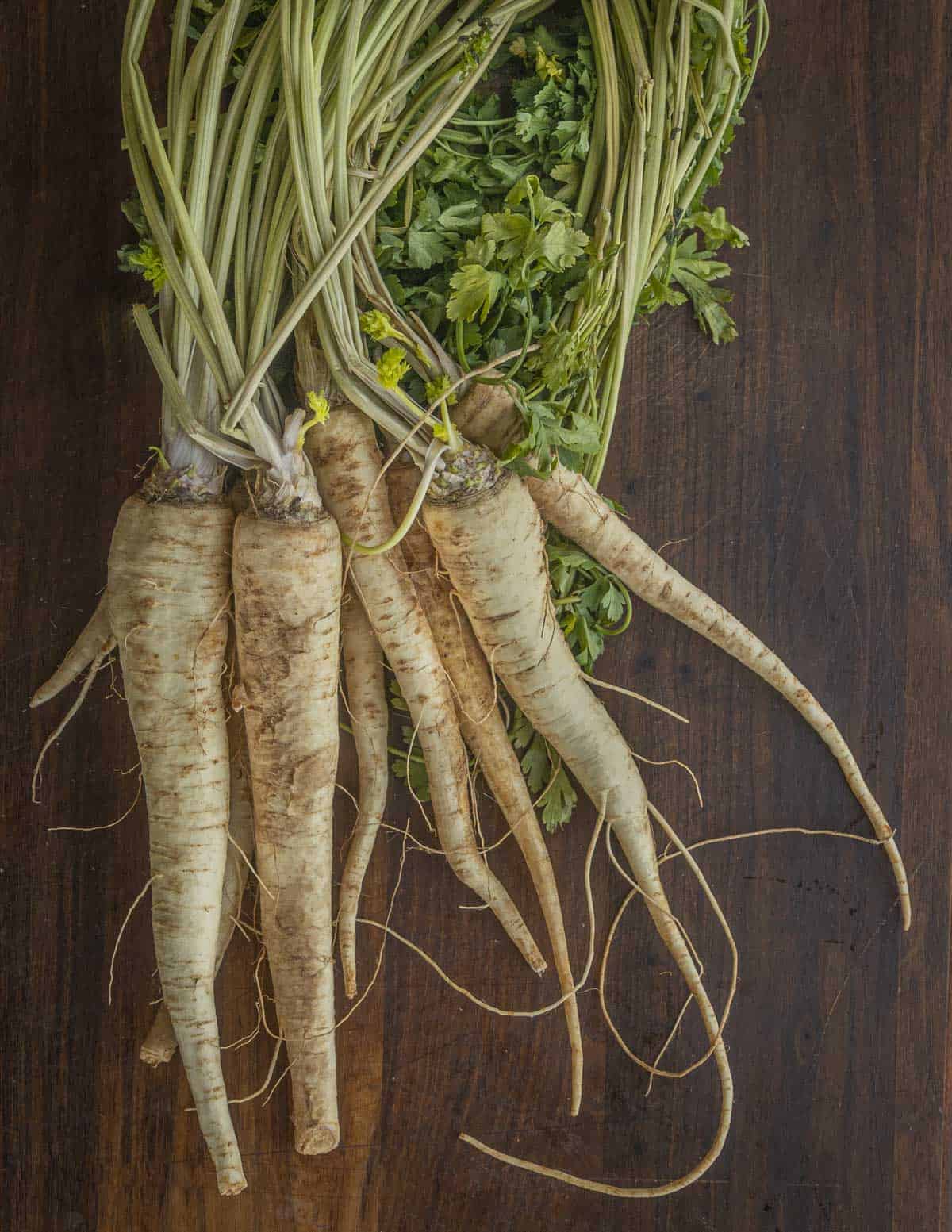
What is Parsley Root?
Just like it sounds, parsley root is the root of a parsley plant. Parsley the herb and parsley root are classified as the same plant (Petroselinum crispum). The only difference is one's been selectively bred for its leaves and the other for its roots. Easily confused with parsnips, parsley roots have a unique taste reminiscent of parsley, carrot, parsnip and celery or celeriac.
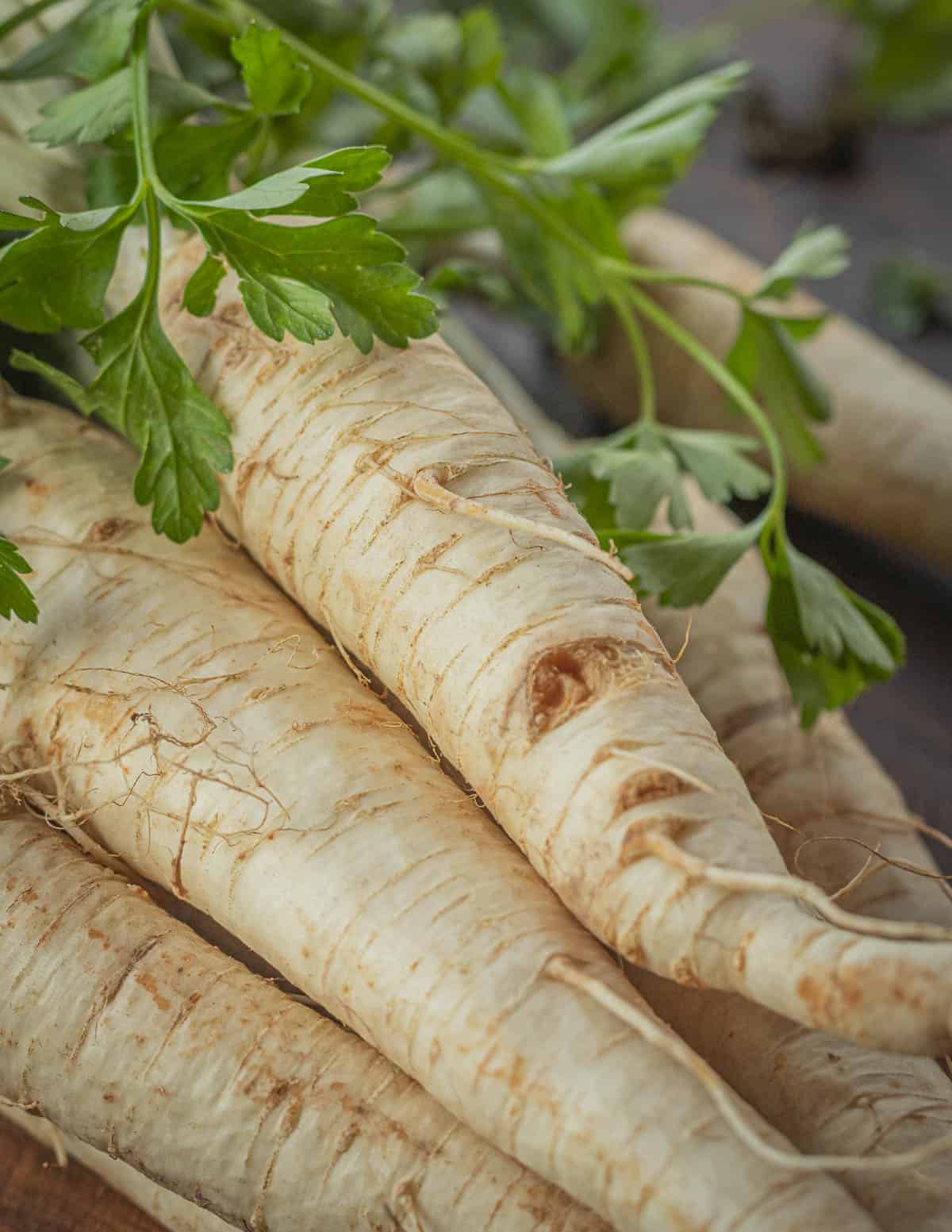
Most of my resources point to rooted parsley being developed by the Germans (specifically in Hamburg) and introduced around the 16th century. Along with skirret, they're one of a few antique root vegetables mentioned in Medieval literature now rarely used but worth the trouble it takes to find them.
Surprisingly, there's a number of different cultivars and I've cooked a few over the years, like the well-known Hamburg rooted parsley. Occasionally local farmers grow them but I generally have to buy the roots now. A ten pound case of parsley root usually costs around $50 from my supplier Bix produce in the Twin Cities.
Just like carrots and parsnips they can be held in the ground overwinter. The roots convert their starches into sugar as a defense against freezing, and the noticeably sweeter roots are dug in the spring.
Parsley Root vs Parsnip
Both parsley roots and parsnips are in the carrot family (Apiaceae) and are interchangeable in recipes. While both are white roots that resemble carrots at a glance, they're also very different:
- Parsnip roots are thicker at the base and taper to a point. Rooted parsley is slender like a carrot.
- Parsnips have a much more distinct, fibrous core in the middle while parsley roots look like white carrots.
- Parsley root tastes like a mixture of celeriac, parsnip, parsley and carrot. Parsnips have a distinct floral aroma and are noticeably sweeter.
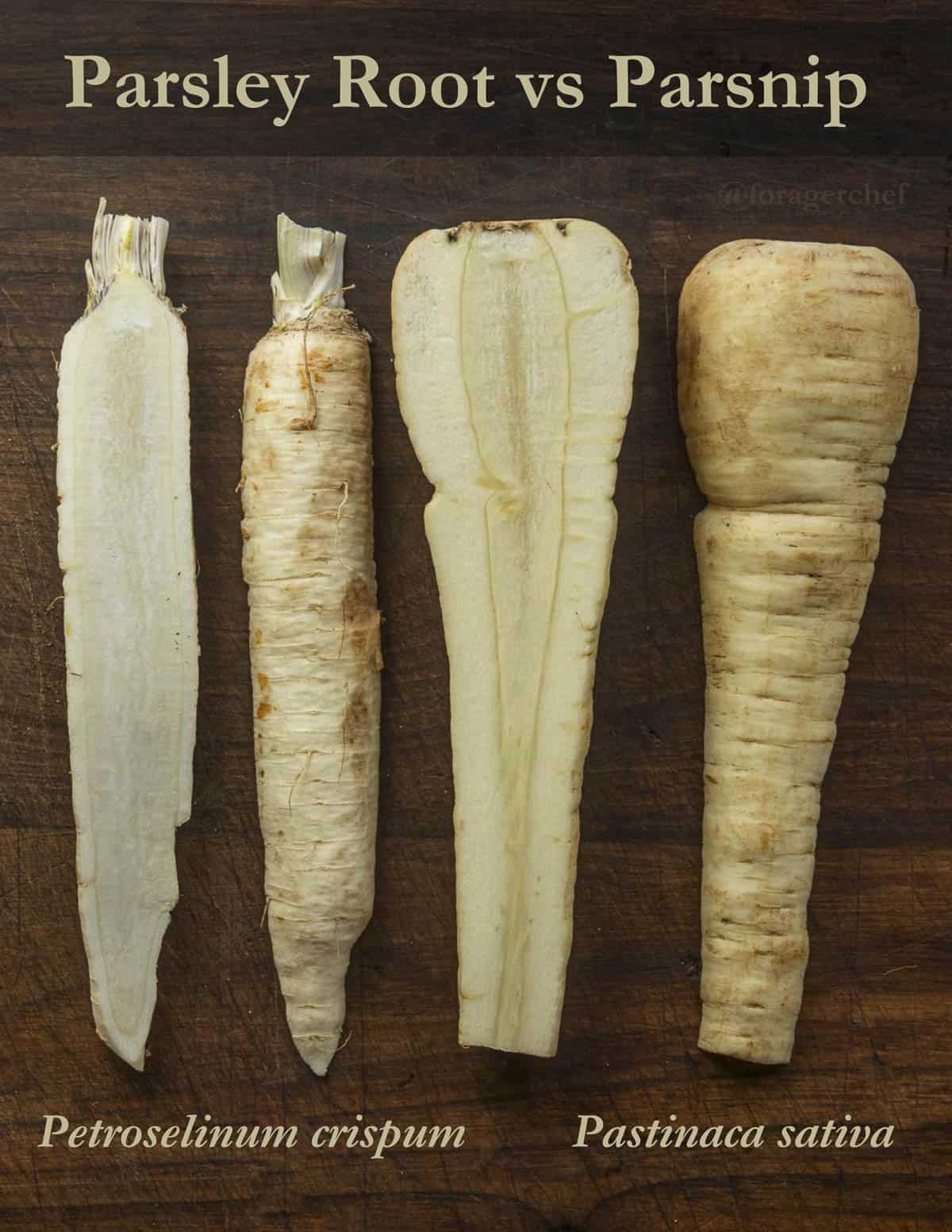
Preparing Parsley Roots
Sliced, diced, julienned or grated, they can be used in recipes that calls for parsnips, carrots and other root vegetables. They can be eaten raw or cooked, and only need to be peeled if they're very dirty. The leaves can be used like parsley but have a slightly stronger flavor.
Just like garden parsnips and carrots, I always cut the top where the petioles attached to the root since it can be difficult to clean.
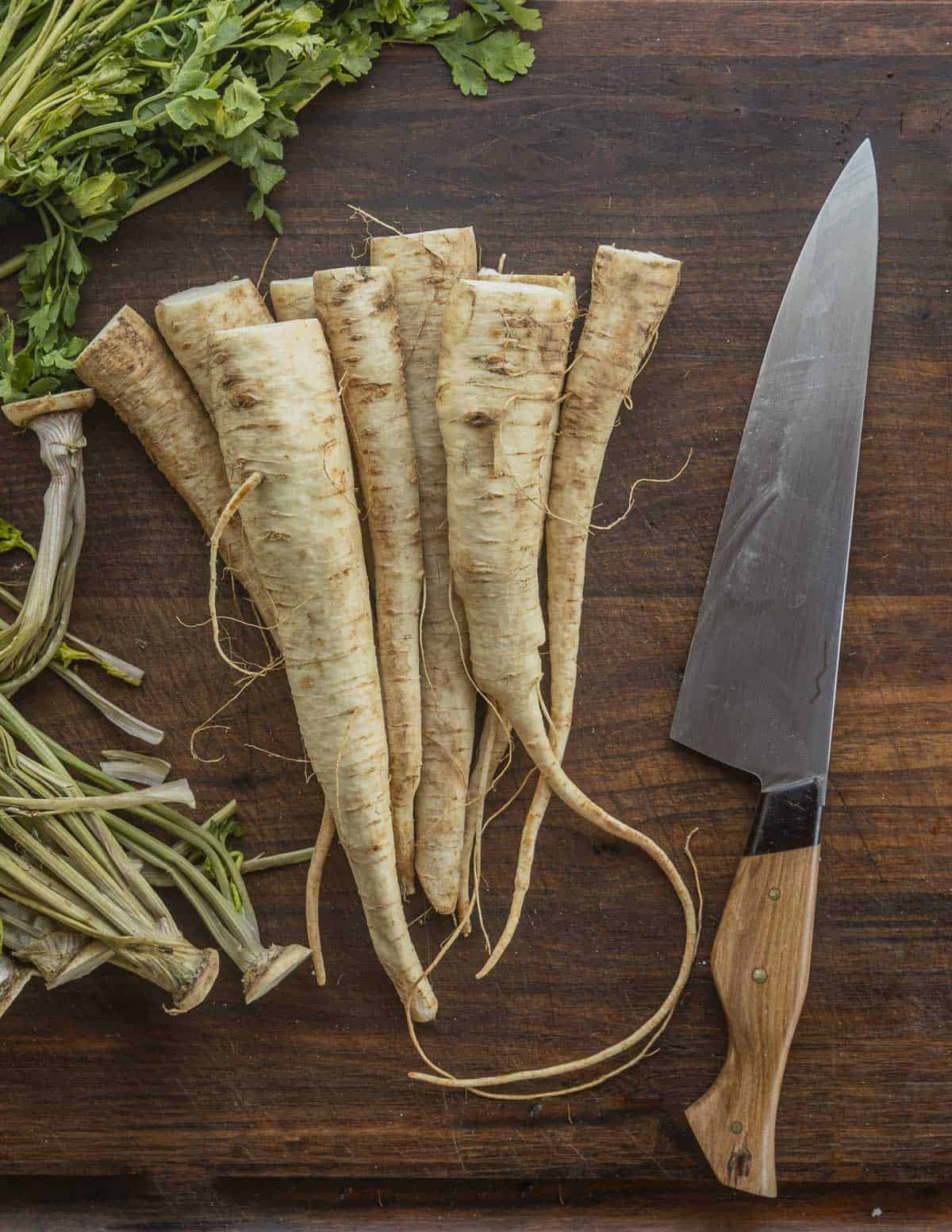
Fresh roots can last for weeks in the fridge. Just like other root vegetables, if they start to get soft, soaking them in ice water for a few hours will firm them up and add time to their shelf life.
If at all possible they should be scrubbed-not peeled. Just like celery root, parsnips and carrots, the skin is part of their character and adds flavor and texture.

Parsley Root Recipes
A few hundred years ago it wouldn't have been uncommon to find parsley root cooked in many European soups made with root vegetables. As they were slowly forgotten, carrots, parsnips and other roots took their place in cooking. While there's all kinds of things you can make with the roots, historically they're mostly a soup vegetable.
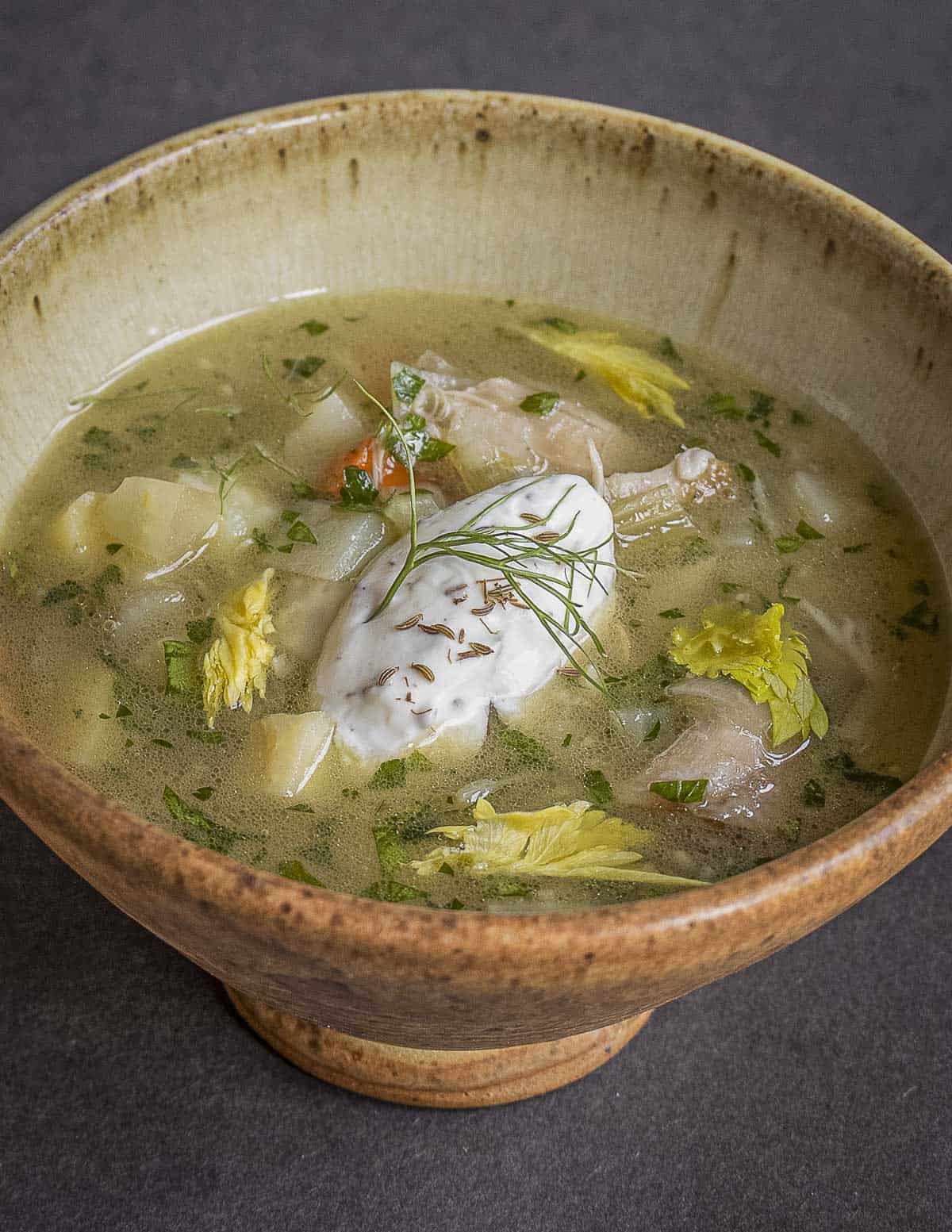
Since parsnips and other roots are such an easy substitute, specific recipes using parsley roots are rare. But, there are a few dishes from Eastern Europe and German cuisine still known to use them, all of which are soups and stews.
For starters there's Belgium's Waterzooi, a sort of creamy chicken stew and Czech Bramboračka, a thick root vegetable and dried mushroom soup.

Not surprisingly, they're also a traditional ingredient in Borcht recipes where it can be grated or cut into pieces.
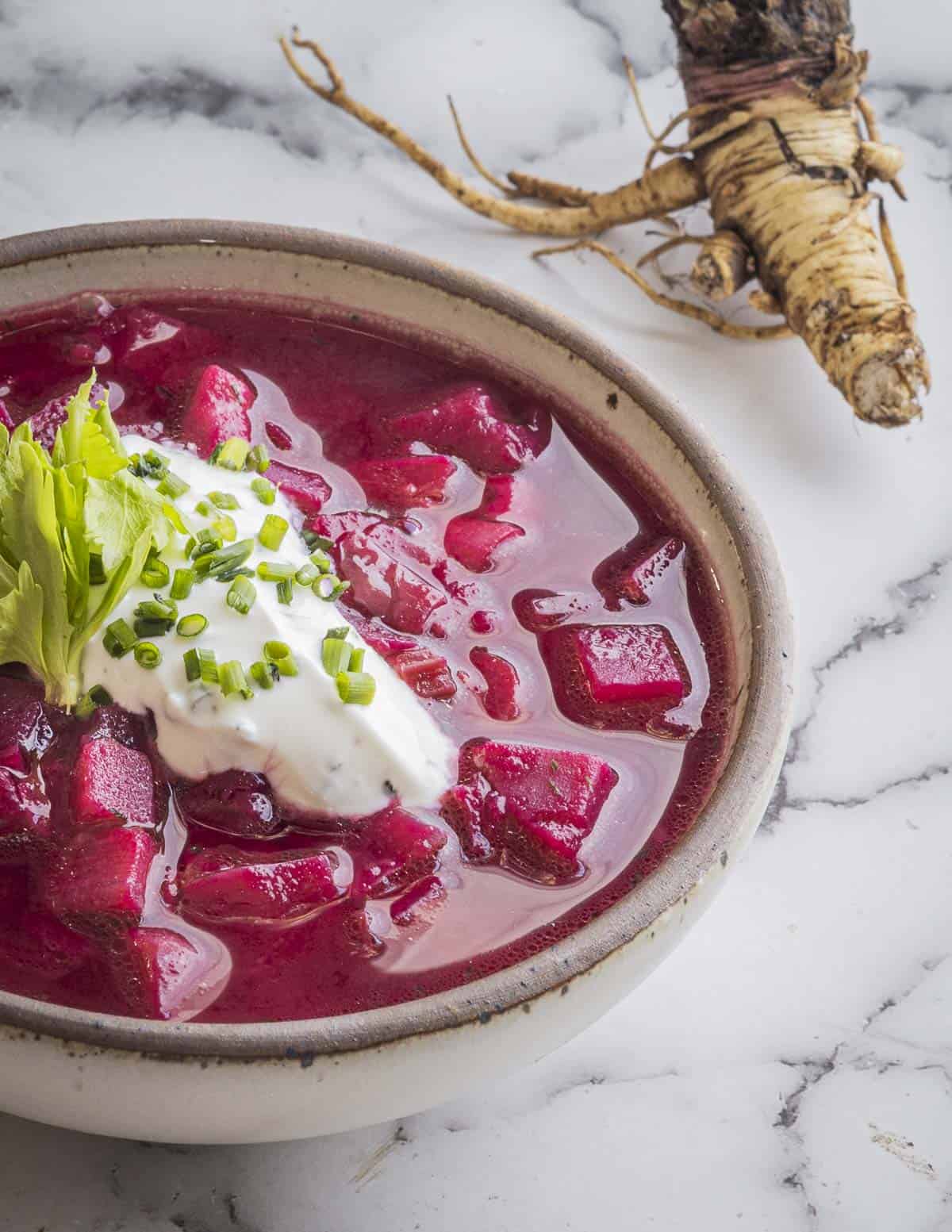
I have a few simple ways I like to prepare the roots besides cooking in broth: a velvety soup and a rich puree. They also make a great side dish roasted whole with carrots for a contrast in color and flavor.
For raw preparations, they work well in vegetable slaws and the classic French grated carrot salad.
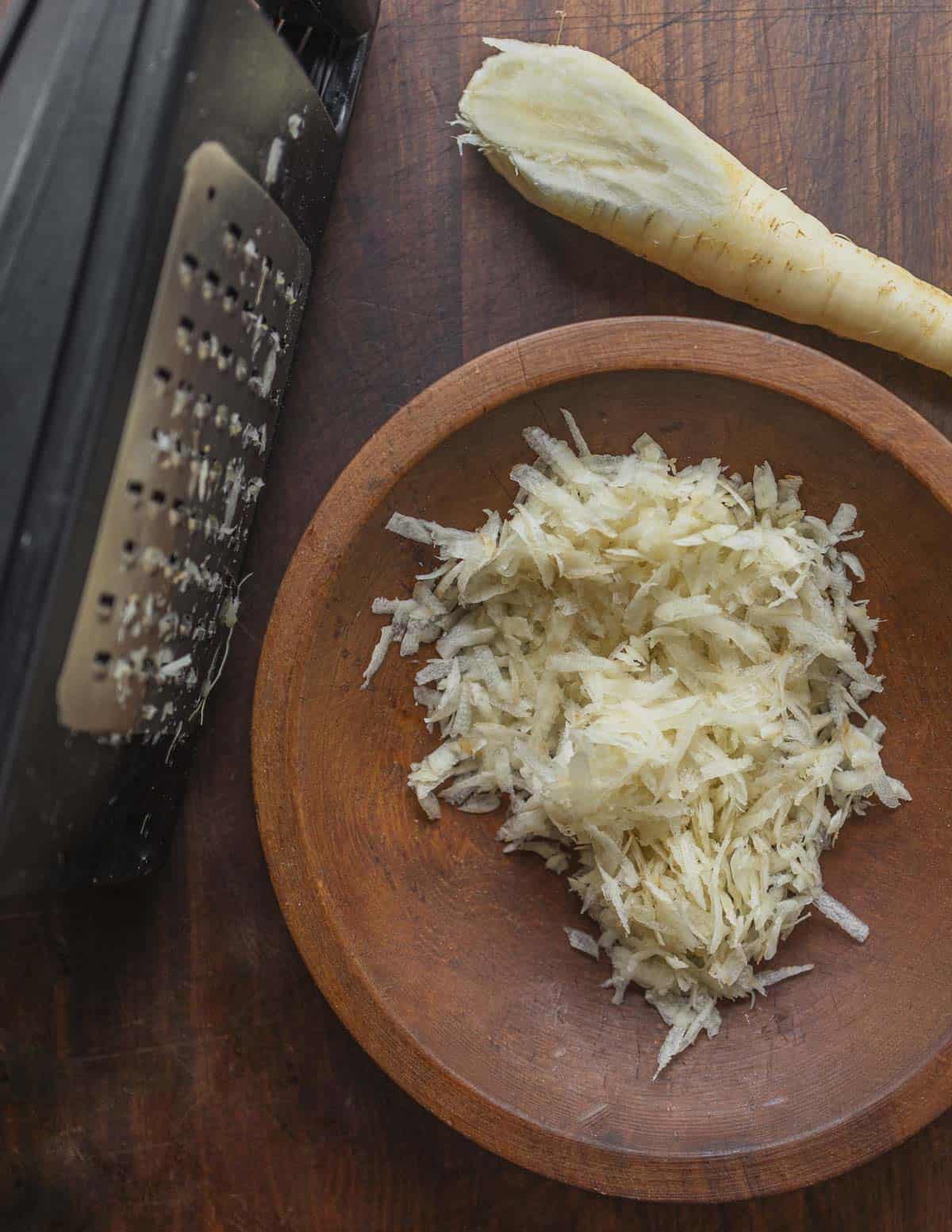
Roasted Parsley Root and Carrots
A rustic side dish, and my favorite way to prepare carrots, parsnips and similar roots. The roots are scrubbed, lightly oiled and roasted until the skin's lightly charred.

One taste of the sweet, tender roots and you'll never look at a carrot the same way again. I make large batches of them to add to meals throughout the week.
Cream of Parsley Root Soup
Another easy recipe great for feeding a crowd is a simple pureed soup.
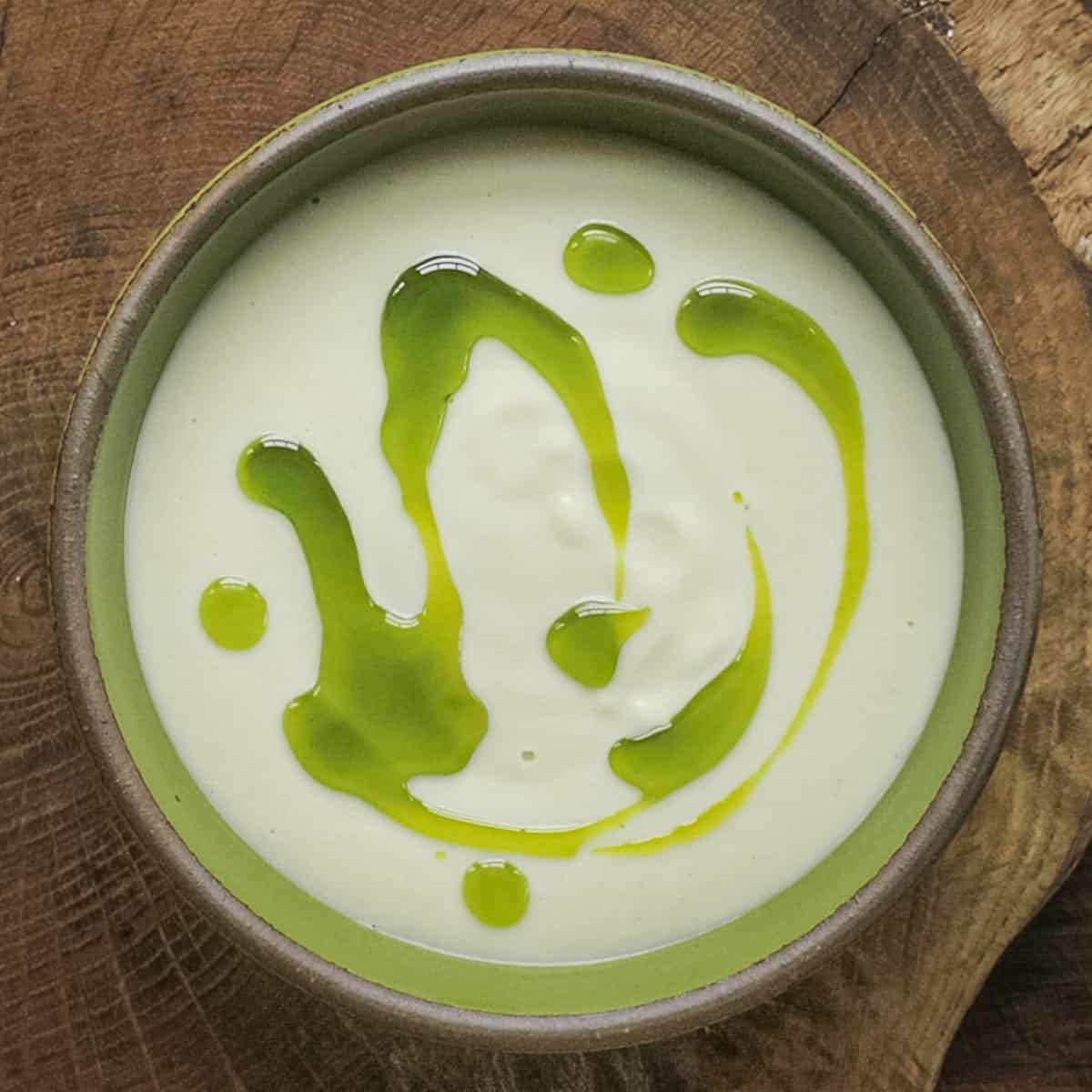
I use a white mirepoix of leek and onion to keep the soup white, simmering with chicken stock and pureeing with cream to finish. A drizzle of green herb oil adds a great contrast.
Parsley Root Puree
An elegant way to serve the roots I use on special menus. Sometimes called a fondant, thinly sliced roots are simmered with cream and pureed until velvety smooth with a few chunks of butter.
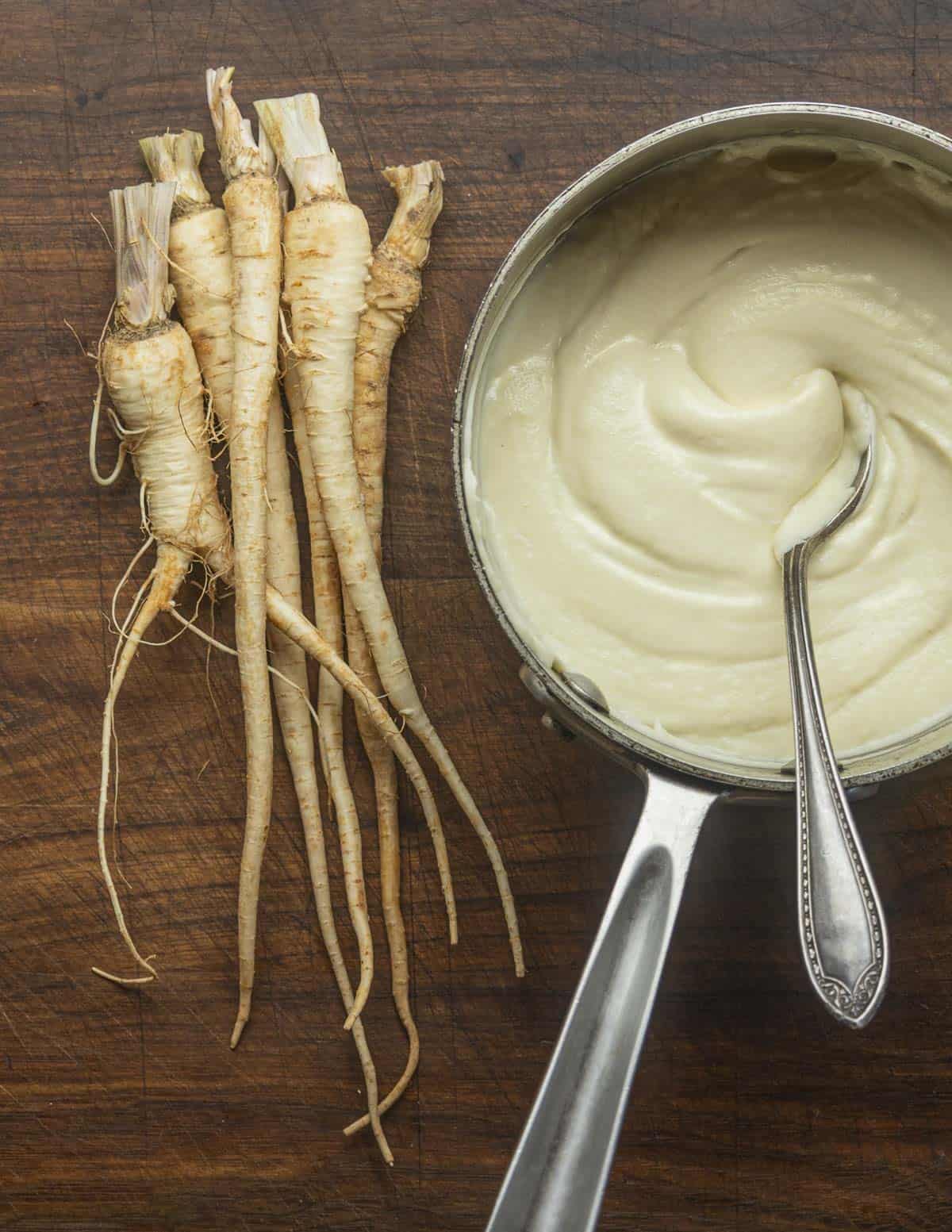
It's excellent with fish, poultry and pork, but especially seared sea scallops.
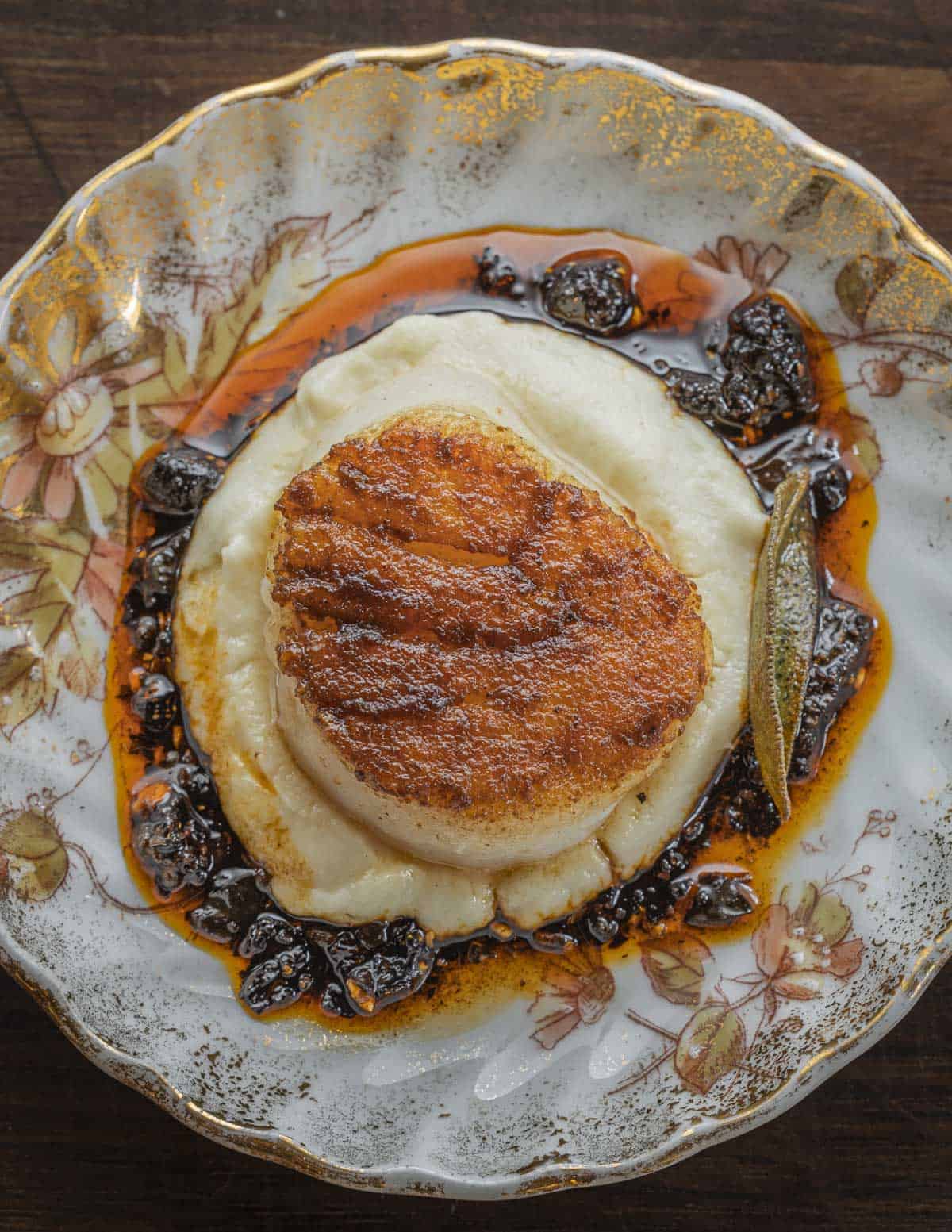
A small amount of the puree brings a dish together while leaving room for dessert or more courses. The (old) image from a wine dinner below is another good example.
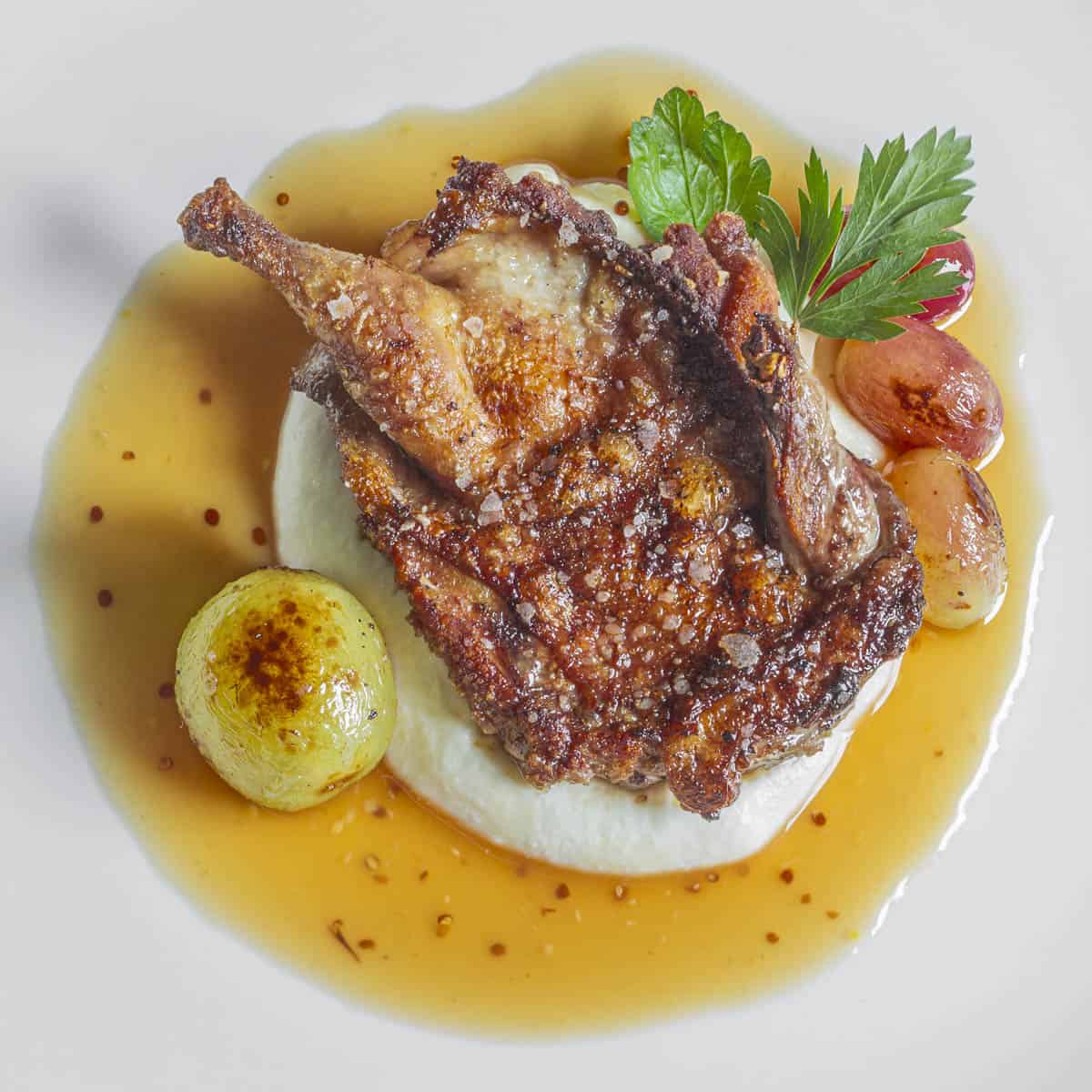

Brian E
Fun and informative article! I’m intrigued by that photo of Bramboracka soup with root vegetables and morels. Question, do you have or recommend a recipe for that, as I’m not having much luck searching in English for a good recipe. Thank you
Alan Bergo
Hi Brian. I have one but I haven't edited it and it needs a reshoot for better images. I also need to make it again just to be sure it's perfect. I'll prob get it up next fall. Sorry I don't have it onhand.
Louise Kasl
I am also interested in the Bramboracka soup. I hope you've time to retest and dial it in to share. Also do you have suggestion for making a root puree without dairy? Coconut cream seems too sweet.
I'm adding this to my garden bucket list along with other suggestions of yours!
I ordered your book from my local bookstore and will be sending to my niece for a New Year gift. I will be ordering another for me! So grateful to have found you.
Charlotte
How interesting that’s it’s so tricky to find parsley root. When I moved to Norway it was, and still is, waaaay easier to find parsley root over parsnips in the shops. I had never seen parsley root back in Sweden. Now I’m growing both in my garden, it’s easy to find seeds even of heirloom varieties.
Alan Bergo
Thanks for sharing Charlotte. That's so interesting.
pete hautman
Thank you for this. I've been making bramboračka every fall and winter for years and have never found parsley root at any of the many local markets I frequent, so I go with parsnips and celery root. (Recently I added some dried scleroderma for flavor—removing before eating)—but didn't notice much difference.)
Alan Bergo
Hey Pete. Yes I've tried the Scleroderma trick out of curiosity. They have to be very firm and fresh to not crumble when dried and even after adding more than I thought was necessary I didn't taste anything different in the finished product. Puffballs dried in slices can work ok as an aromatic though.
Carla Beaudet
Bellflower?
Amy Planchet
Just read the answer above. Bravo to the winner and thank you for that quiz, I guessed wrong but learned so much!
Alan Bergo
Thanks Amy.
Christiaan de Wit
What do I win if i guess it?
Burdock Root I imagine.
Alan Bergo
You win the knowledge of knowing you are skilled in obscure root vegetable identification.
Rebecca
Looks like evening primrose to me. Is leaf parsley worth digging up the roots?
Alan Bergo
Bravo, someone knows their roots. And no, it isn’t worth digging the roots of leaf parsley.
Allison Koster
I grew Hamburg parsley/parsleyroot several years when I lived in SW Minnesota. It's like a bonus in the garden--use the leaves all summer and, in the fall, dig up the root! One year I missed digging a couple so they overwintered in the ground. When I dug them the following June they were HUGE--crowns just shy of 3" across!!
I would LOVE to find a couple pieces of skirret root to plant--I've tried twice to grow from seed and have been unsuccessful. (I currently live in the Red River Valley, so I'm sure it's impossible to find any growing wild in our alkaline clay soil...)
Alan Bergo
Hi Allison, yes skirret is difficult to grow. Even if you can find seeds in the US my plants never survived very long. If you ever get some going I’d pay well for a few. They won’t grow wild here.
Laura Nevins
Is it Thistle root? By the way, I greatly look forward to your emails and appreciate your content so much.
Alan Bergo
Thanks. No it’s not a thistle. It does have edible leaves but they don’t taste good. Mostly it’s known for an oil extracted from it used for medicine.
Laura Nevins
I'm so curious now! The only other guess I have is Osha/Ligusticum? The leaves are terrible tasting and the root is used for medicine, but the root is used for more than just oil.
Alan Bergo
It’s so funny I didn’t think anyone would ask comment on it. It’s not osha, the root can be used as a soup vegetable. Very tall flower stalk in the summer.
Stephanie
Burdock?
Alan Bergo
Nope. Burdock has darker skin. This one is beige colored with flecks of pink.
Amy Planchet
Based on your hint I’m going to guess Queen Anne’s Lace root.
Alan Bergo
Nope. Much larger flowering stalk.
Stephen Brueckner
Mystery root looks like ginger.
Alan Bergo
Nope. It’s a wild root.